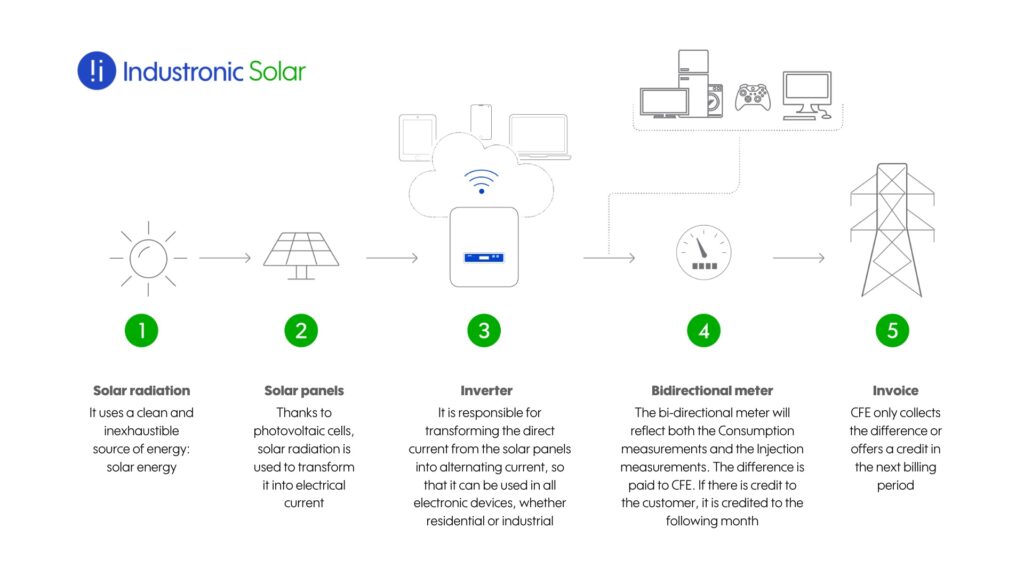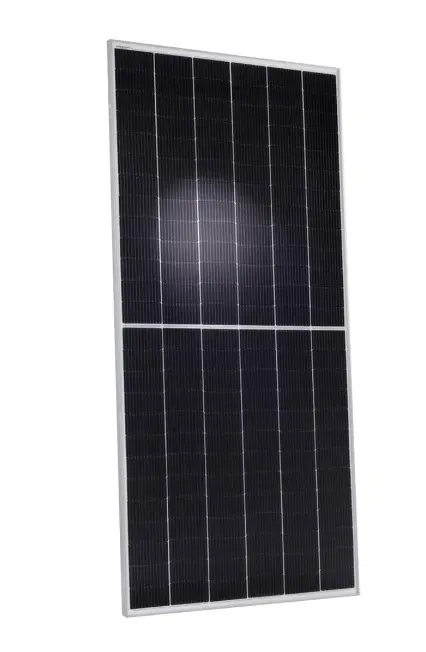Solar energy has become one of the most popular and accessible renewable energy sources worldwide.
The installation of solar panels is an increasingly attractive option for businesses and households, not only because of the economic benefits it brings, but also because of the positive impact it has on the environment.
In this guide, we’ll cover everything you need to know about solar panel installation, from its importance and benefits to the installation process and key considerations for a successful implementation.
What are the main benefits?
Solar panels offer multiple benefits that make them an attractive option for many individuals and businesses. Here we highlight the main economic and environmental benefits:
Economic benefits
- Savings on energy bills: One of the most obvious benefits of installing solar panels is the reduction in energy costs. By generating your own electricity, you can lower your bill considerably.
- Tax incentives and subsidies: Many governments and local entities offer tax incentives and subsidies to encourage the use of renewable energy, which can significantly reduce the initial cost of installation.
According to section XIII of article 34 of the Income Tax Law (LISR), 100% of the installation cost of any power generation system using a renewable energy source is deductible.
- Return on investment: Although the initial investment for the installation of solar panels can be high, the long-term return on investment can be significant due to bill savings and incentives. It is estimated that it is between 1.5 and 2 years that you start to see results versus ROI.
- Increased property value: properties with solar panels tend to be more attractive in the real estate market, which can increase their value and make them easier to sell.
Environmental benefits
- Reduced carbon emissions: generating electricity from solar energy reduces dependence on fossil fuels and thus reduces carbon emissions, contributing to a cleaner and healthier environment.
- Renewable energy source: unlike non-renewable resources, solar energy is inexhaustible, contributing to sustainability and reduced environmental impact.
- Reduced air and water pollution: Solar panels do not emit pollutants into the air and water, unlike some traditional energy sources, contributing to a cleaner and safer environment for all.
How to calculate the installation of solar panels?
Calculating the installation of solar panels involves several important steps to determine how many panels you need, the total cost and the power generation potential.
These are the factors we take into account at Industronic when quoting a solar panel installation project in industrial and commercial sectors.
1. Assessment of energy consumption
First, we need to understand how much electricity consumption your property has. We do this by reviewing electricity bills for the past 12 months and calculating the average bi-monthly and annual consumption in kilowatt-hours (kWh).
This information is crucial to correctly size your solar system according to the required consumption.
2. Location and orientation analysis
The location and orientation of your roof or installation area are key factors. You will need to know:
Roof pitch and orientation: pitched roofs facing south (in the northern hemisphere) or north (in the southern hemisphere) are usually ideal. Roof material, KR 18 sheet, trapezoidal sheet, slab, TPO.
Shading and obstructions: we assess whether there are trees, buildings or other structures that may cast shadows on the solar panels.
3. System sizing
Using the power consumption and site analysis, we can estimate how many solar panels you need. Here it is important to take into account:
- Efficiency of the solar panels: efficiency determines how much energy can be generated per square metre. More efficient panels can produce more energy in less space.It is important to take into account the geographical location to calculate how many hours of sunshine are available at the installation site and how much energy the panels will be able to generate. For example, a 10-panel system generates more energy in Ciudad Juarez than in Monterrey.
- Power: Solar panels available on the market come in different sizes and powers. This depends on the amount you need to supply the need in each case.
Industronic’s QCELL solar panels have a capacity of 595 W:
Thanks to improved power output, excellent reliability and high operational safety, the QCELL Solar Panel produces electricity at a low price and is suitable for a wide range of applications.
- Breaking the 21% efficiency barrier
- Low cost of power generation
- Rated for extreme weather conditions
- High long-term performance
- Reliable investment
- State-of-the-art module technology
- Industronic monitoring
4. Estimating the space required
The available space is a determining factor in determining how many panels you can install. You can calculate the area required by multiplying the number of panels by the area of each panel. However, it is essential to consider more than just the physical space.
First, we consider whether the infrastructure of your building or facility can support the weight of the structure and the solar panels.
For this, the roofs and underlying structures must be assessed by structural engineers to ensure that they can handle the additional weight of the panels, the support structure, and other components such as inverters and cabling.
This aspect is especially relevant in industrial and commercial sectors, where the installation of large volumes of solar panels can add considerable load to roofs or other structures.
5. Calculating the installation cost
The total cost of installing solar panels depends on several factors:
- Price per watt or per panel: the price includes the panels and other components, such as inverters, brackets, and wiring.
- Installation costs: these include labour, permits, and other expenses associated with installation.
- Incentives and grants: research local and state incentives that may reduce the total cost of installation.
Click here to quote your solar panel system with Industronic.
6. Calculating the return on investment
Finally, you can estimate how long it will take to recoup the initial investment in solar panels through savings on electricity bills and other incentives.
This includes factors such as the current price of electricity, the rate of inflation and the growth in the cost of energy.
The return on investment of solar panels is one of the fastest in the world; between 1 to 2 years with a lifetime guarantee of 25 years. There is no return on investment as safe and fast as photovoltaic.
Step by step for the installation of solar panels
The solar panel installation process requires precision, planning and technical expertise. With over ten years of experience, Industronic follows a meticulous approach to ensure that each installation is safe and efficient.
The following are key steps we take in the installation of solar panels in residential, industrial and commercial sectors
Designing a support structure
The design of the support structure is the first step in the installation of solar panels. Industronic performs a structural assessment to determine the load-bearing capacity of the roof or installation surface.
In industrial and commercial environments, where the weight of the system can be considerable, this analysis is essential to ensure safety.
The customised design ensures that the structure is tailored to the customer’s specific needs and is made of high quality materials that are resistant to corrosion and adverse weather conditions. This ensures a solid and durable base for the solar panels.
How does our solar panel system work?

Fixing the roof and the solar panels
Once the structure has been designed, the roof is attached and the solar panels are installed. Industronic employs personnel who are certified to work at heights to ensure the safety of the process.
The structure is attached to the roof using specialised anchors and brackets that do not damage the surface and protect against leaks. The solar panels are then mounted at the optimum orientation and inclination to maximise energy generation. This process ensures stability and durability of the solar system.
The connection to the electrical inverter
The electrical inverter converts the direct current (DC) energy produced by the solar panels into alternating current (AC), which is used by electrical appliances.
Industronic selects the appropriate inverter according to the size and capacity of the solar system. The connection process follows strict protocols to avoid electrical risks and ensure the quality of the connections.
In the case of grid-connected systems, Industronic coordinates with the Federal Electricity Commission (CFE) to guarantee a safe integration in accordance with local regulations.
Maintenance
Maintenance of the solar system is key to its long-term performance. Therefore, periodic inspections should be performed to identify and resolve potential problems before they cause failures.
Learn about Industronic’s technical support services
Our panels offer a 12-year product warranty and a 25-year linear performance warranty, ensuring their smooth operation, production and performance.
If you are considering the installation of solar panels for your home or business, there is no better time than now to act. The economic and environmental benefits are clear, and with Industronic, you can be sure you will receive exceptional service.

